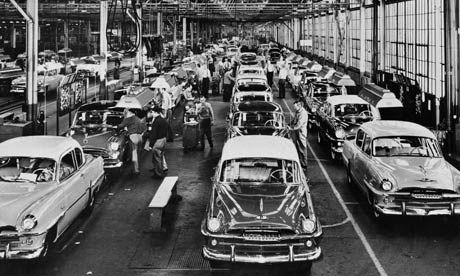Originally, what appealed to techno artists was the possibility of making all of the music by themselves. Techno removed the need for real players; the artist could produce all of the sound independently, with just a machine. Techno-Parade creates a fascinating phenomenon by taking this concept—machines imitating acoustic instruments—and reversing it. In the most innovative and creative moment of the piece, the pianist is asked to put sheets of paper on top of the piano strings and rub a brush against them while playing. This move produces an amazing effect: the piano suddenly sounds like a digital sampling of its own self. An acoustic instrument is now imitating a machine, whose original purpose was to imitate an acoustic instrument. I know, very meta!
The charm of Techno-Parade comes from integrating techno with contemporary classical and jazz music. After a short introduction and a lush piano glissando, the music moves into irresistible, repeated rhythmic patterns written in 7/8 meter. These patterns appear a few times throughout the piece. In jazz they are called riffs and are sometimes used as bed for improvisations. While practically all techno music is written in a steady 4/4 meter—making it easy to dance to—Techno-Parade changes meter constantly and unpredictably, building excitement and surprise.
Techno music was born in the nightclubs of Detroit, Michigan, in the 1980s. Some say that techno was inspired by the noises and rhythms of the factories that make up Detroit’s famous auto industry, but others dismiss that as a legend. In any case, great classical composers such as Bach, Beethoven, and Wagner, were constantly looking for ways to improve and develop the abilities of different instruments. With the overwhelmingly rapid development of technology in the 20th century, composers started looking for ways to incorporate technology in music. And it was only a matter of time before technology would be used in popular dance music too.
I’ve listened to Techno-Parade many times in the past few days, because I enjoy it so much. But it’s not just the pleasure of listening to it that makes Techno-Parade—out of all the new pieces I listened to this week (recall that I am listening to at least one new piece each day for this project!)—such a standout. I’m excited because it has opened a small door for me into the world of techno music, a genre I had previously overlooked. And if your experience with nightclubs and techno is similar to mine, there’s a chance that Techno-Parade will do the same for you.
Out of all I’ve learned about techno this week, there is one thing in particular that I found especially inspiring, which has really made me think about techno in a new way. It is a quote from a Detroit based techno producer named Carl Craig. He said: “since we’re dealing with machines, it’s important that we put some of ourselves into the music. And by ‘ourselves,’ I’m not just meaning note values. I’m meaning spirit; I’m meaning heart. I’m talking about that little ‘oomph’ that’s needed to go into it to make it powerful; to make it me.”
Listen to Guillaume Connesson's Techno-Parade here.


No comments:
Post a Comment